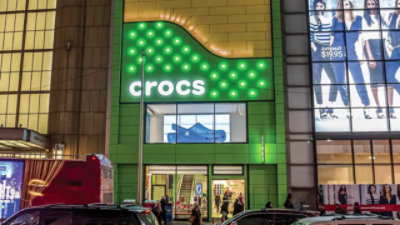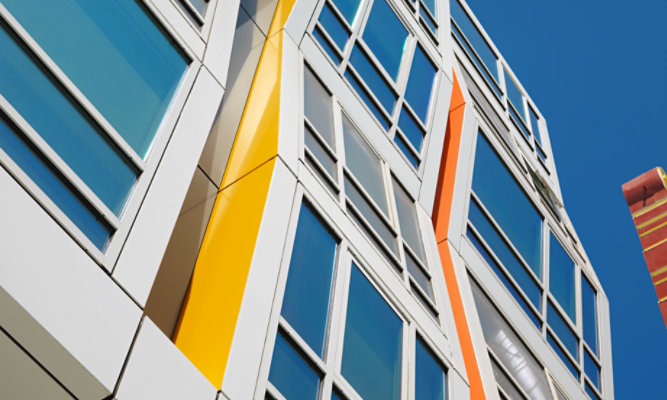
What architects want from color
From textured finishes to color matching, we examine the results of a recent Building Design + Construction survey on color trends.
As seen in AIA
Color is undeniably influential, and one of the best ways to display it is through paint and coatings. Throughout the 2000s, advancements in color technology have made it quick and easy to achieve the right color, enabling the world to experience vibrant hues in a new light.
In August 2020, Building Design+Construction (BD+C) magazine released its Color Trends Report, which published the results of a 16-question survey sent to hundreds of architecture, engineering, and construction (AEC) professionals. According to the survey, “two-thirds of architects, interior designers, and color experts said that color on design projects (interior spaces and exterior design) is more important than it was a decade ago.”
To elaborate on the statistic above, the survey asked, “Of the following innovations in color/coatings, which have you specified on projects within the past 24 months?”
Here’s what participants said:

In looking at these results, it’s clear that AECs want color that’s environmentally conscious, achievable across multiple substrates, and multi-dimensional.
Colorant systems that address VOCs
“VOCs” are volatile organic compounds, and happen to be a complicated. Although AECs want paint that’s labeled as “low-VOC” or “zero-VOC,” when it comes to reaching both color and air quality requirements, it’s important to understand a paint’s chemical make-up.
Since the mid-2000s, paint manufacturers have invested heavily into sustainable technology, like innovative colorant systems, that don’t add VOCs to certain paints when tinted. Conventional colorant systems can add VOCs to the finished product, meaning, paints labeled as “zero-VOC” may not always maintain that level at the time of application. An exceptional interior or exterior colorant won’t add VOC content when tinted and won’t sacrifice performance, color accuracy, or vibrancy.
Color matching across substrates
For an architect, inspiration can strike at any time. Stumbling upon the exact color, in the form of a door handle, piece of fabric, or photograph, can happen, which is why it’s important for a coatings supplier to have precise color matching capabilities. Color matching across multiple material types used to be a daunting task for suppliers, but the process has become more sophisticated, thanks to color tools and color apps that can match color within seconds.
Textured and special-effect finishes for exteriors
Participants in the BD+C Color Trends Report cited nature and fashion as two of their biggest sources of color inspiration. These inspirations can come to life through coatings by specifying a special-effect pigment. Textured finishes that mimic materials and natural elements, or create eye-catching sparkle or color-shifting iridescence, are achievable. Multi-dimensional effects are possible while maintaining a high level of performance with the right coating system.
Although color can play a huge role in specifying coatings, AECs must also consider stability and durability, especially with exterior paint. In the past, adding texture or special effects to exterior finishes meant sacrificing color integrity, trading one desired aesthetic for another, but new innovations make both characteristics possible.
Color and durability
High performance and color are attainable through various AAMA 2605-approved liquid and powder coating systems engineered with fluoropolymers. For exterior aluminum and steel substrates, fluoropolymer-based powder coatings offer ultimate protection against the elements, and for applications like curtain walls, aluminum window frames, metal wall panels, and metal roofing, liquid fluoropolymer coatings provide exceptional weathering capabilities.
Ensuring long-lasting performance will mitigate costly rework associated with color and coatings failures down the road. To achieve the right color and level of performance for these building products, work with a versatile coatings supplier that offers AAMA-accepted powder and liquid coatings and application expertise.
The future of color
BD+C’s Color Trends Report bolsters what AECs want from their paint and coatings. While it’s important to look back at technological advancements made in VOCs, color matching, and special effects, adopting tools that predict forward-looking trends can be game-changing. Color trend forecasts, backed by science and based on cultural, societal, and global insights, provide an imaginative crystal ball into the future of color, inspiring AECs to look beyond the swatch.
Featured Media
Discover More
View articles, videos and other content related to this topic or other topics in our resource center.
Go to Resource Center




